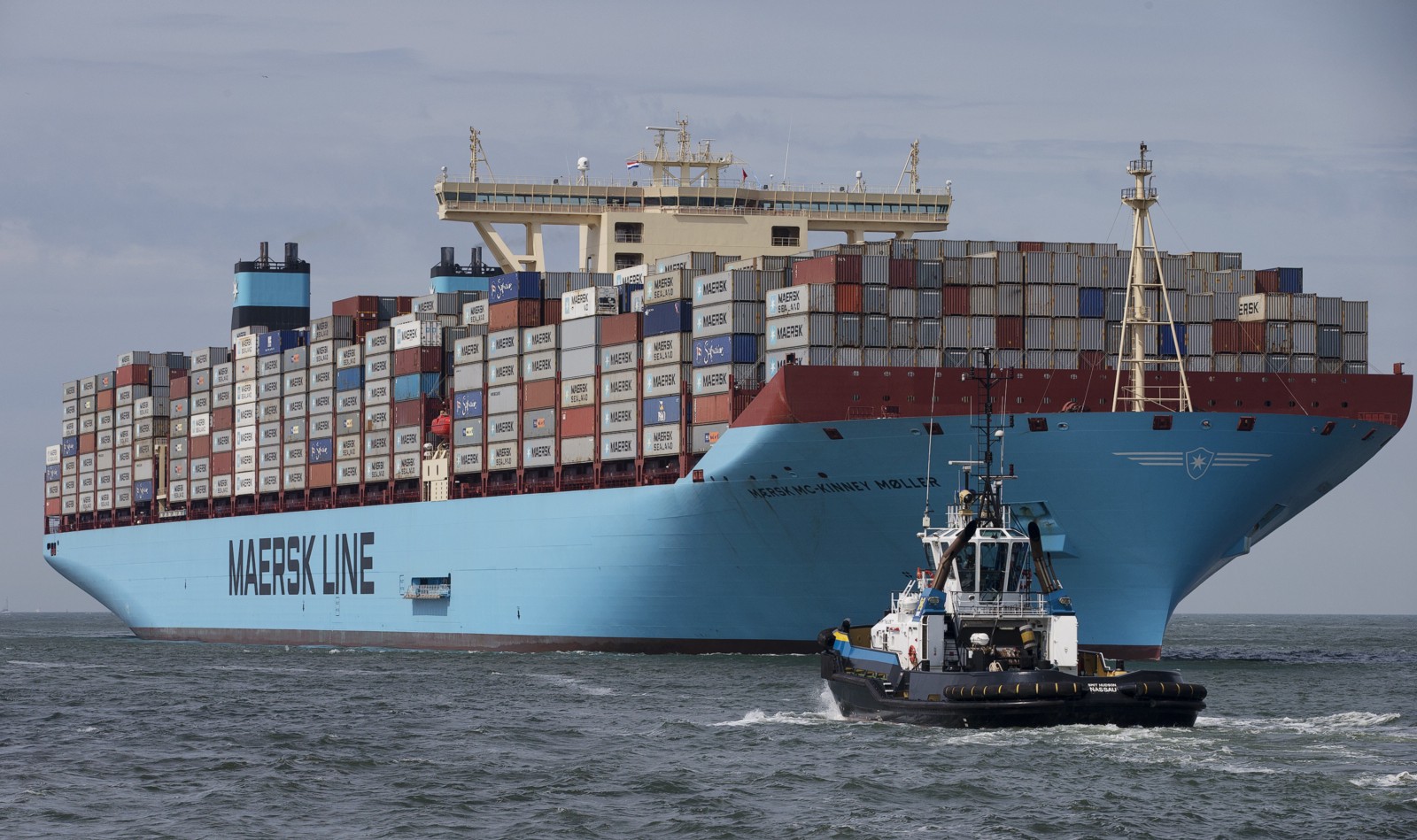While the rest of the world prepares to implement the Paris Agreement, the shipping industry puts off climate action plans for another seven years — and begins to collect emissions data.
By Kate Wheeling

The world’s biggest container ship, the Maersk MC-Kinney Moller, arrives at the port of Rotterdam in the Netherlands. (Photo: Jerry Lampen/AFP/Getty Images)
The environmental committee of the United Nation’s International Maritime Organization met in London last week to discuss how to ensure that the industry is taking on its fair share of climate change action. The IMO called the agreement that came out of the meeting an “important milestone on the road to controlling greenhouse gas emissions,” while critics called it a “lackluster outcome” and even an “abject failure.” Any agreement between the IMO’s 170 member states is a political achievement worth celebrating, but it’s also a reminder that, in order to get everyone to sign, you sometimes have to settle for painfully slow progress.
The IMO’s plans to reduce the sulfur content of ship fuels to 0.5 percent or less on the global oceans will go into effect in 2020 as expected. But when it comes to reducing other, more direct greenhouse gases, what the IMO agreed to last Friday is merely a “roadmap,” to use the organization’s phrase — a plantodevelopastrategy to reduce greenhouse gas emissions from ships, to be adopted in 2023, but no actual targets yet.
In the meantime, large ships will begin collecting data on fuel use, which the IMO says will provide a quantitative basis for any future policies. The earliest an initial strategy could be adopted would be 2018.
The IMO knows that emissions regulations are necessary, but the agency claims that more data is necessary to determine just how strict those regulations need to be.
Environmental non-governmental organizations such as Transport & Environment have urged the European Union to include emissions cuts from the shipping sector into its own emissions-reduction targets by setting up an emissions trading system. But, according to Simon Bennett, the director of policy at the International Chamber of Shipping, regional actions will only complicate efforts to regulate carbon dioxide on a global scale — a problem the ICS has called “a global challenge which can only be solved meaningfully by global agreement.”
But it’s not as though the industry will be doing business as usual over the next seven years. Despite the lack of an official IMO policy for greenhouse gas emissions, the industry has been trying to use less fuel, and thus creating less carbon dioxide emissions, for several years — even as the price of oil, and thus marine fuels, has dropped.
The reason falling fuel prices have had so little impact on shipping behavior is because the cost of fuel is still incredibly high — roughly three times what it was back in 2000, according to Bennett. Reducing fuel consumption is a matter of self-interest. “Shipping is a very competitive market,” Bennett says. “Profitability is determined more by your ability to minimize costs…. If the main thing you’re able to make a profit from is the ability to reduce your costs, the priority of every shipping company is to get those fuel costs down.”
For the last several years, shipping companies have mainly used operational measures — like sailing slower, also known as slow steaming — to reduce fuel consumption by 10 percent between 2007 and 2012, even as the number of ships on the ocean grew.
When ships are forced to switch to low sulfur fuels in 2020, the cost of fuel could double overnight, according to Bennett. The good news is those price hikes are unlikely to be passed down to consumers; given the overcapacity of the industry, freight rates are likely to remain low. (And even when they are high it costs less than a dollar to ship a television from China to the United States.)
How the industry will meet this new regulation, without breaking the bank, is still being sorted out. Ships can be outfitted with scrubbers, which strip exhaust of sulfur but create a pollutant residue that has to be disposed of. “It’s an environmental impact conundrum,” Bennett explains. “You’re trying to improve the environment by reducing emissions in the air, and then you’ve got to balance that between the emissions that are caused somewhere else.” Such trade-offs are not unusual. The refining process to create low-sulfur fuels, for example, produces more carbon dioxide.
Liquid natural gas (LNG), which emits less carbon dioxide when it burns and virtually no sulfur, is another promising option to meet the new regulation — depending on how much it costs and how much tanks of LNG cut into a ship’s storage capacity.
Policymakers must keep all of these tradeoffs in mind as they determine the best strategies for the industry, economies, and the environment. The IMO knows that emissions regulations are necessary, but the agency claims that more data is necessary to determine just how strict those regulations need to be.
“There are so many moving parts,” Bennett says, “no one knows exactly where we’re going, but we’re definitely going toward cleaner fuels.”





